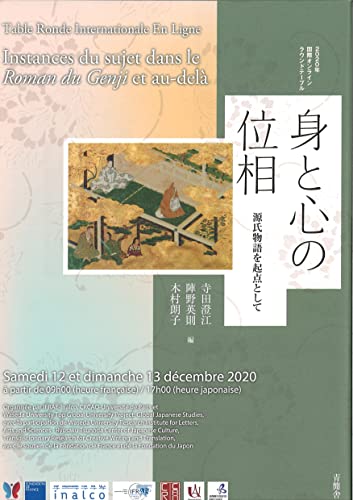- 著者
- 寺田澄江 陣野英則 木村朗子編
- 出版者
- 青簡舎
- 巻号頁・発行日
- 2021
1 0 0 0 IR 研究発表 歌作りということ ―和歌史における俊頼の位置―
- 著者
- 寺田 澄江
- 出版者
- 国文学研究資料館
- 雑誌
- 国際日本文学研究集会会議録 = PROCEEDINGS OF INTERNATIONAL CONFERENCE ON JAPANESE LITERATURE (ISSN:03877280)
- 巻号頁・発行日
- no.27, pp.69-80, 2004-03-01
From the Ancient to the Middle age, the fundamental poetical structure progressively shifts from a linear discourse, represented by "pillow word (makura kotoba)" or "introductive word (jo-kotoba)", to a "compositive" one, illustrated by "associated words (engo)". This evolution in the discourse strategy takes form, in terms of waka's versification, the establishment of a very clear double structure―splitten into kami no ku (l7syllables) and shimo no ku (14syllables)―which is related itself with the development of the short linked poetry (tan renga) in the later Heian period. This marginal poetical category, generally treated as a simple transitive form between the waka and the linked poetry, has its part in the important changes in the organization principle of the waka.Minamoto no Toshiyori, to whom the originality in the composition was his great concern, devoted himself to the short linked poetry, considering it as a sole poetical form which one can be proud of among the literary works of his time. According to Kenshô, he difined himself as follows:"I'm not a poem teller (or poem singer: uta yomi) but a poem maker (uta tsukuri). I mean, what I do is, rather than regarding fine effects (fuzei), combining exquisite words and structuring them."I will try to clarify in what way Toshiyori's keen concern to the originality is related with this manifesto-- a very expression of the "compositive" discourse-- and with his interest to the short linked poetry.
1 0 0 0 OA 研究発表 歌作りということ ―和歌史における俊頼の位置―
- 著者
- 寺田 澄江
- 出版者
- 国文学研究資料館
- 雑誌
- 国際日本文学研究集会会議録 = PROCEEDINGS OF INTERNATIONAL CONFERENCE ON JAPANESE LITERATURE (ISSN:ISSN0387)
- 巻号頁・発行日
- no.27, pp.69-80, 2004-03-01
From the Ancient to the Middle age, the fundamental poetical structure progressively shifts from a linear discourse, represented by “pillow word (makura kotoba)” or “introductive word (jo-kotoba)”, to a “compositive” one, illustrated by “associated words (engo)”. This evolution in the discourse strategy takes form, in terms of waka’s versification, the establishment of a very clear double structure―splitten into kami no ku (l7syllables) and shimo no ku (14syllables)―which is related itself with the development of the short linked poetry (tan renga) in the later Heian period. This marginal poetical category, generally treated as a simple transitive form between the waka and the linked poetry, has its part in the important changes in the organization principle of the waka.Minamoto no Toshiyori, to whom the originality in the composition was his great concern, devoted himself to the short linked poetry, considering it as a sole poetical form which one can be proud of among the literary works of his time. According to Kenshô, he difined himself as follows:“I’m not a poem teller (or poem singer: uta yomi) but a poem maker (uta tsukuri). I mean, what I do is, rather than regarding fine effects (fuzei), combining exquisite words and structuring them.”I will try to clarify in what way Toshiyori’s keen concern to the originality is related with this manifesto-- a very expression of the “compositive” discourse-- and with his interest to the short linked poetry.
